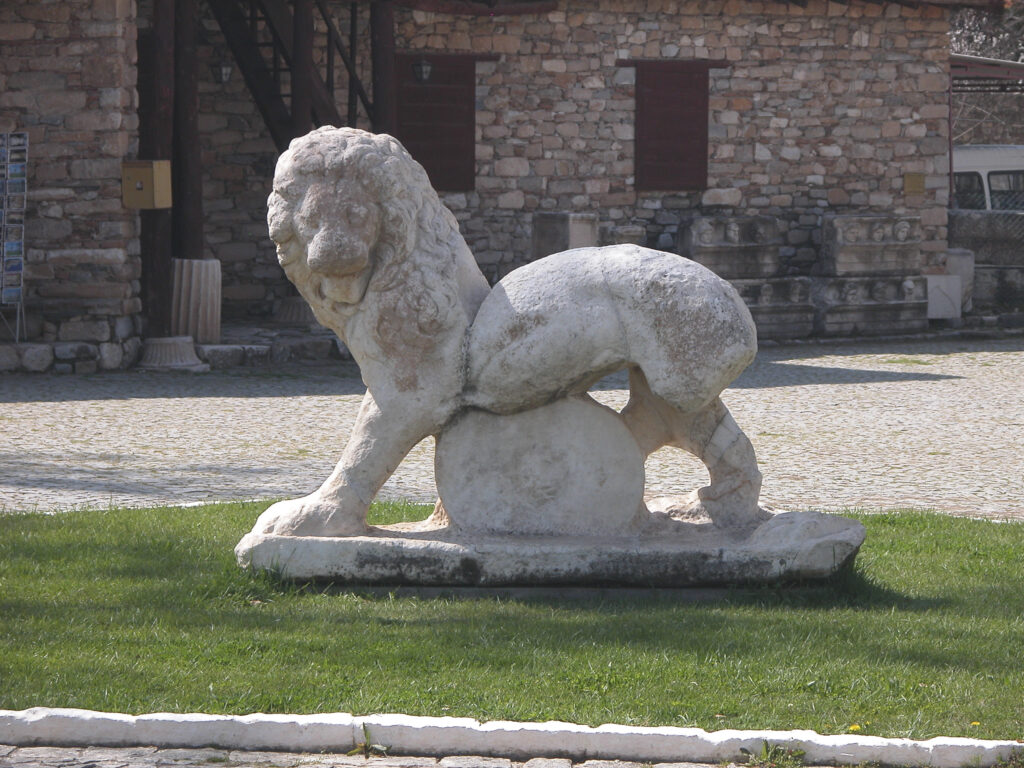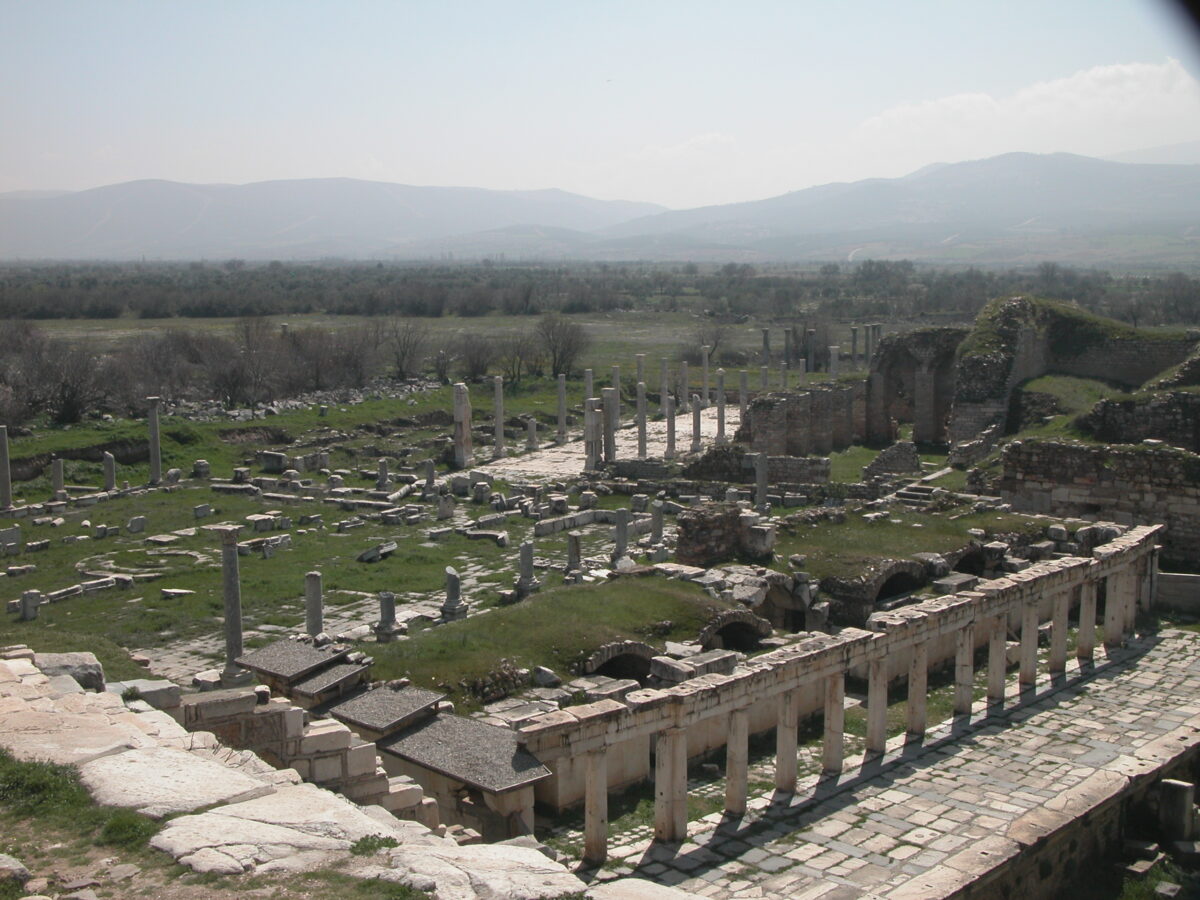On March 26 our tour group boarded a bus which took us into the interior of Turkey. Our ultimate destination that day was the spa of Pamukkale, but along the way we took an excursion to the site of Aphrodisias, the city of Aphrodite, Greek goddess of love.
Aphrodisias was the capital of the Roman province of Caria. Among other things Caria was famous for its quarries of white and blue marble. Not surprisingly, favored with this advantage, Aphrodisias became famous for its school of sculpture; but it was also noted as a center of pagan philosophy into the late 5th century CE.
In 614 a mighty earthquake wrecked Aphrodisias, and it never recovered. Also, by that time the Roman Empire had converted to Christianity, and the city was renamed Stauropolis, City of the Cross, in an attempt to erase the old pagan associations. Later still, by the 8th century CE, it became known by the name of the province, Caria, and after the region came under Turkish control in the 13th century, this eventually morphed into the Turkish name Geyre.
Formal excavations at the site of ancient Aphrodisias began in 1904, but really got underway in earnest in the 1960s, led by the Turkish archaeologist Professor Kenan Erim of New York University, who supervised the work there until his death in 1991.
Many of the sculptures and other artifacts recovered by excavations are housed in the on-site museum, shown below. However, we left the museum for last and headed out to tour the city first.
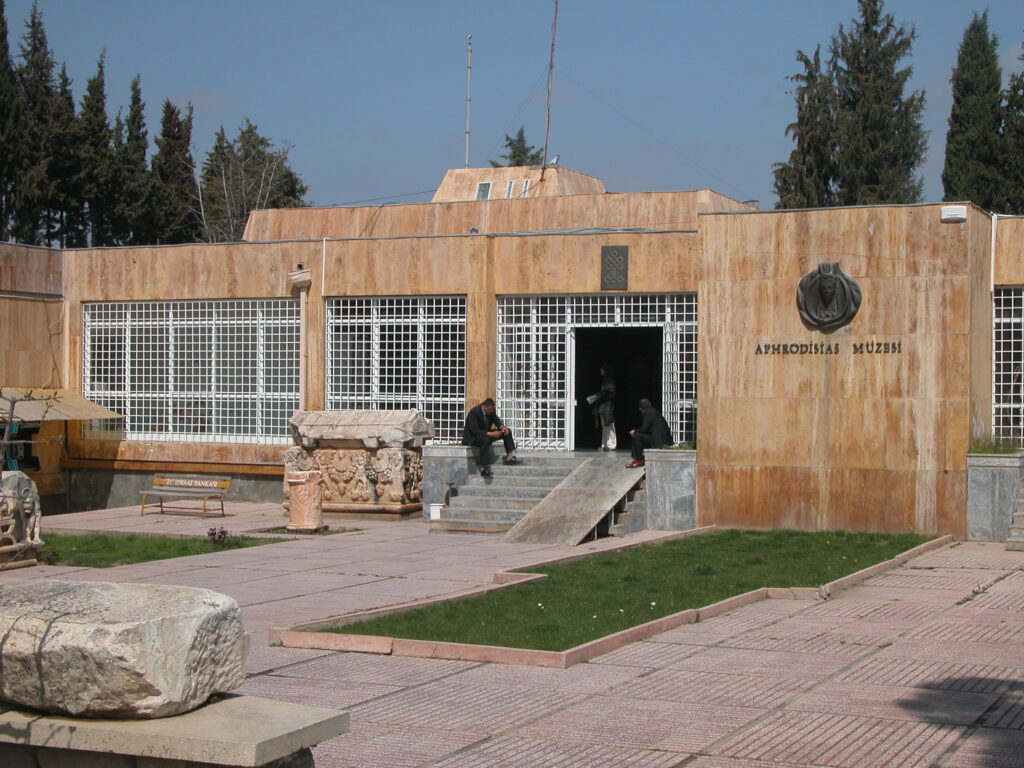
Our path first us first to the Amphitheater, which was built into the side of the Acropolis.
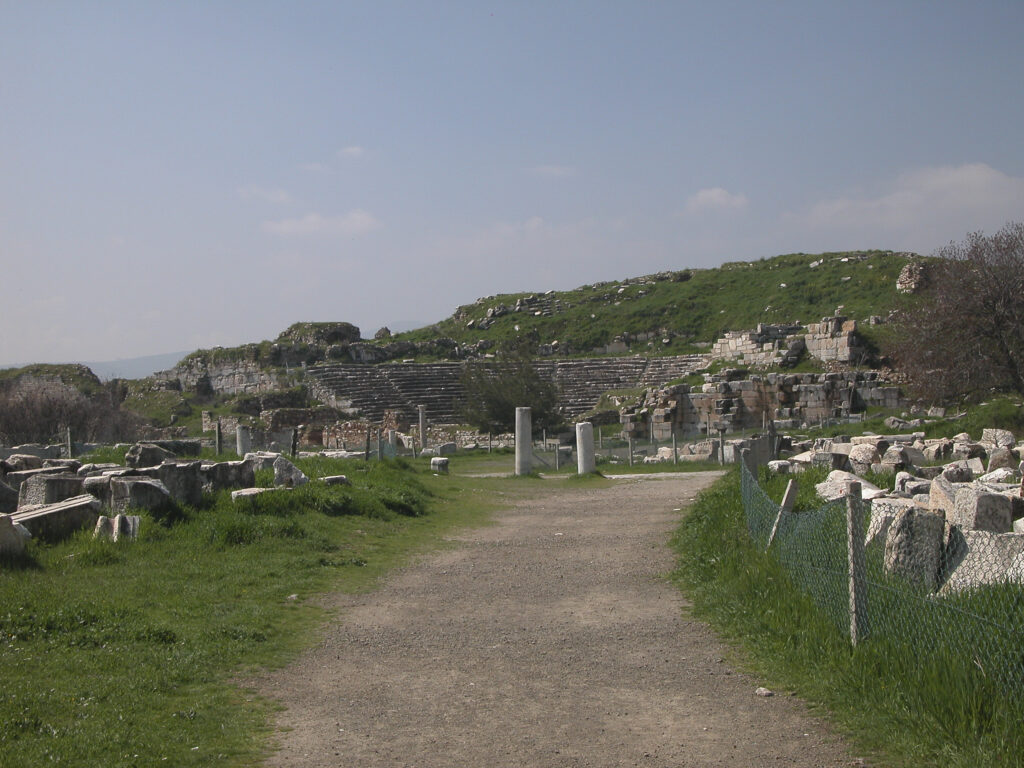
Next to the Amphitheater we encountered the South Agora and the Baths of Hadrian. The Baths of Hadrian, built across the west end of the South Agora, were massively constructed from large tufa-like blocks faced with marble veneer and consist of five great barrel-vaulted chambers, with an imposing colonnaded court in front.
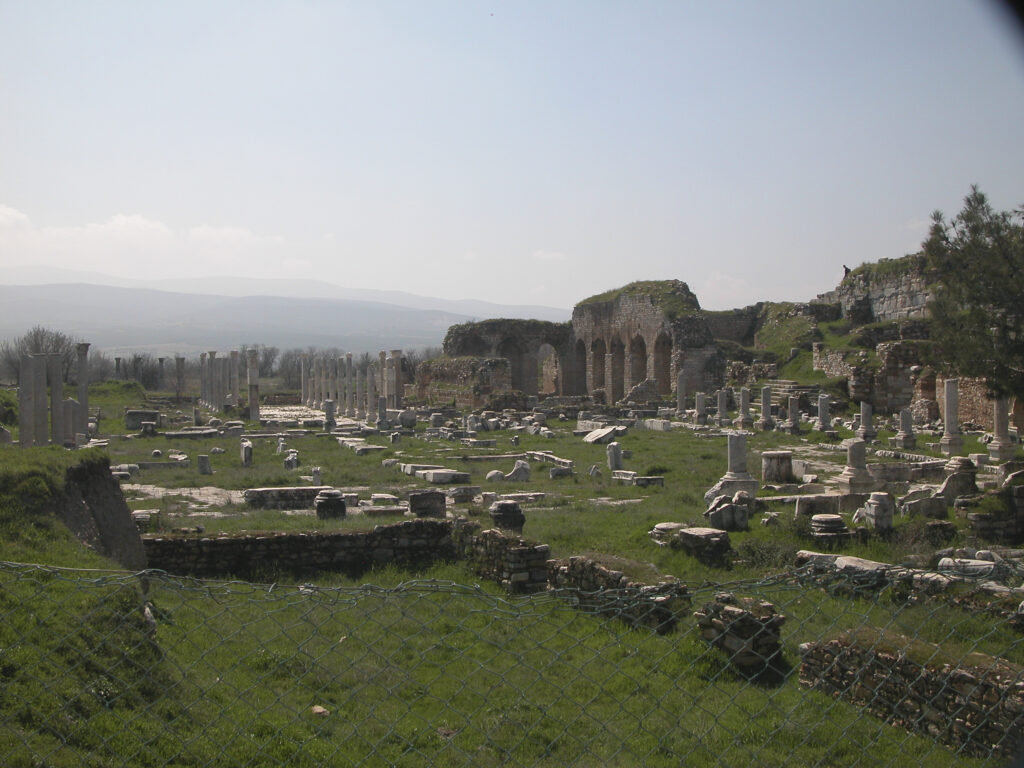
Aphrodisias is pleasantly situated amidst groves of trees and flowering bushes. As it was only the beginning of spring in Anatolia, the trees were mostly still bare, and just a few of them were starting to come into bloom.
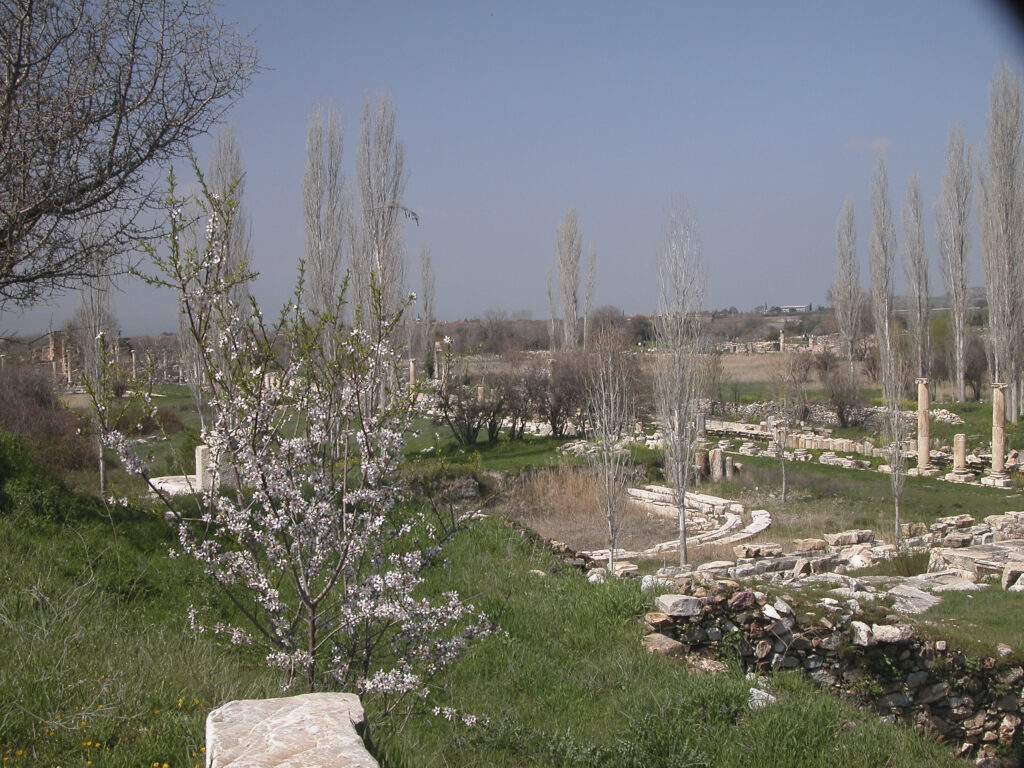
The Amphitheater was built in the late first century BC under the patronage of Gaius Julius Zoilus, a native of Aphrodisias who had become a slave of Julius Caesar but was freed by his heir Octavian. Returning to his birthplace a wealthy man, Zoilus initiated a vast building program, of which the Amphitheater was one of the first fruits. Zoilus also influenced the city’s leadership to support Octavian in his struggle with Mark Antony for mastery of Rome, thus securing Octavian’s lasting favor in the form of financial privileges that ensured the city’s subsequent prosperity.
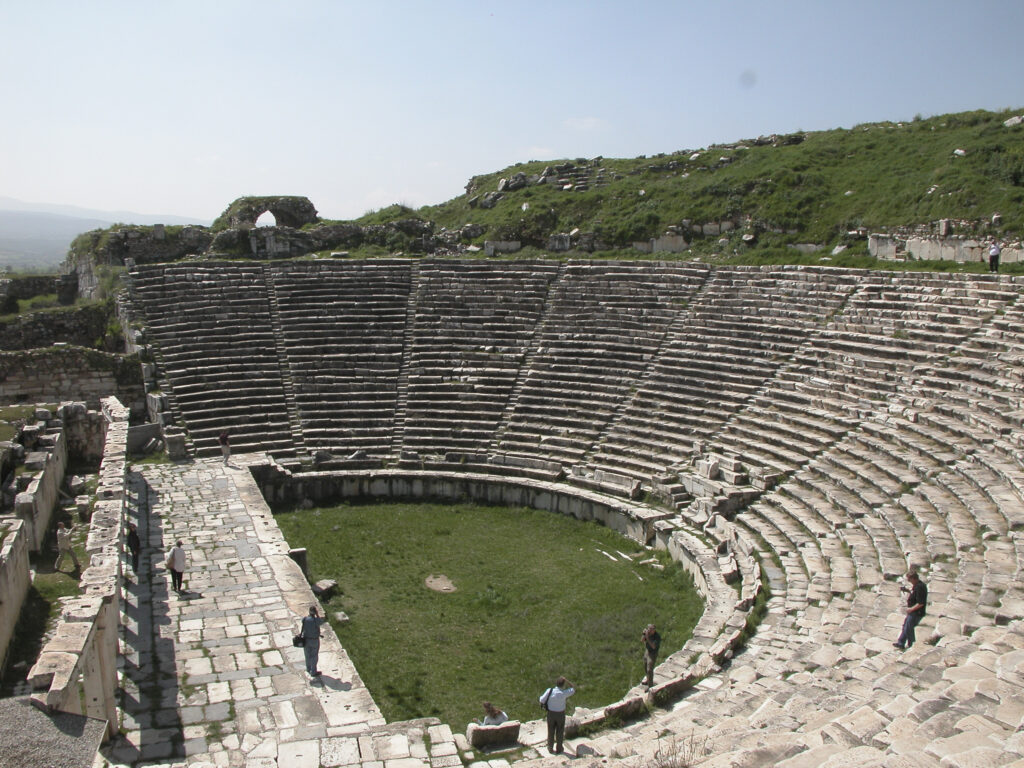
The amphitheater had a large structure behind the stage which originally consisted of 3 stories, only one of which has been restored.
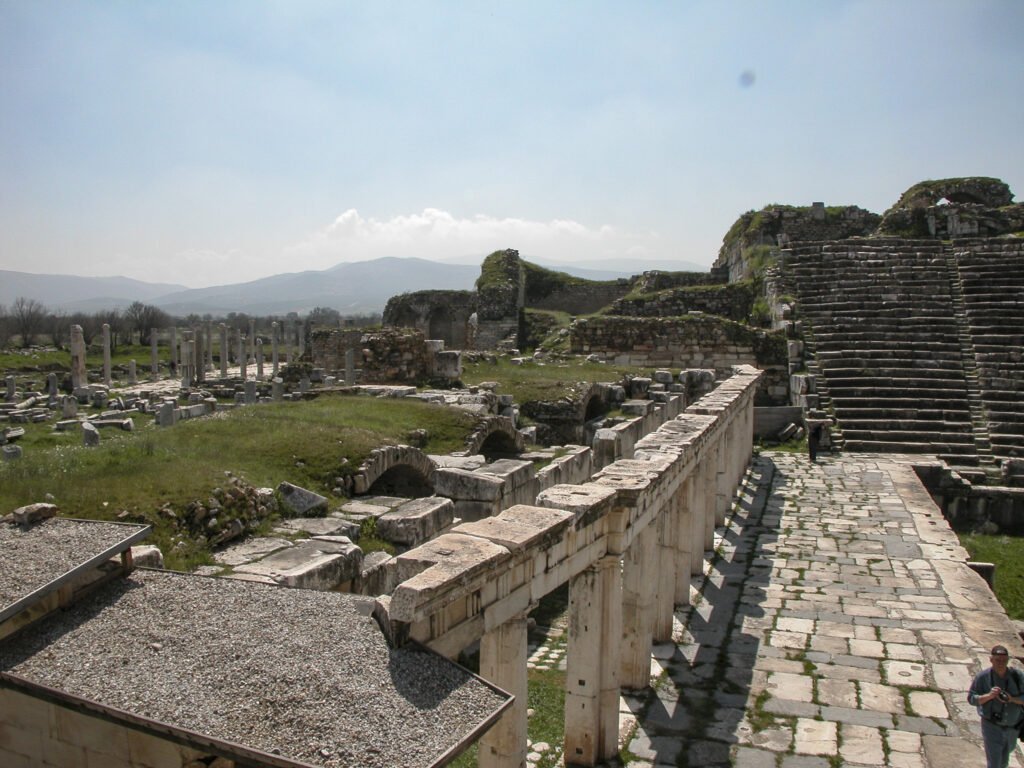
The Amphitheater was severely damaged by earthquakes in the 7th century CE. Later, the local inhabitants built cottages on top of the cavea (seating section), which became the village of Geyre, but when excavations began in 1966 the entire village was relocated about a mile away.
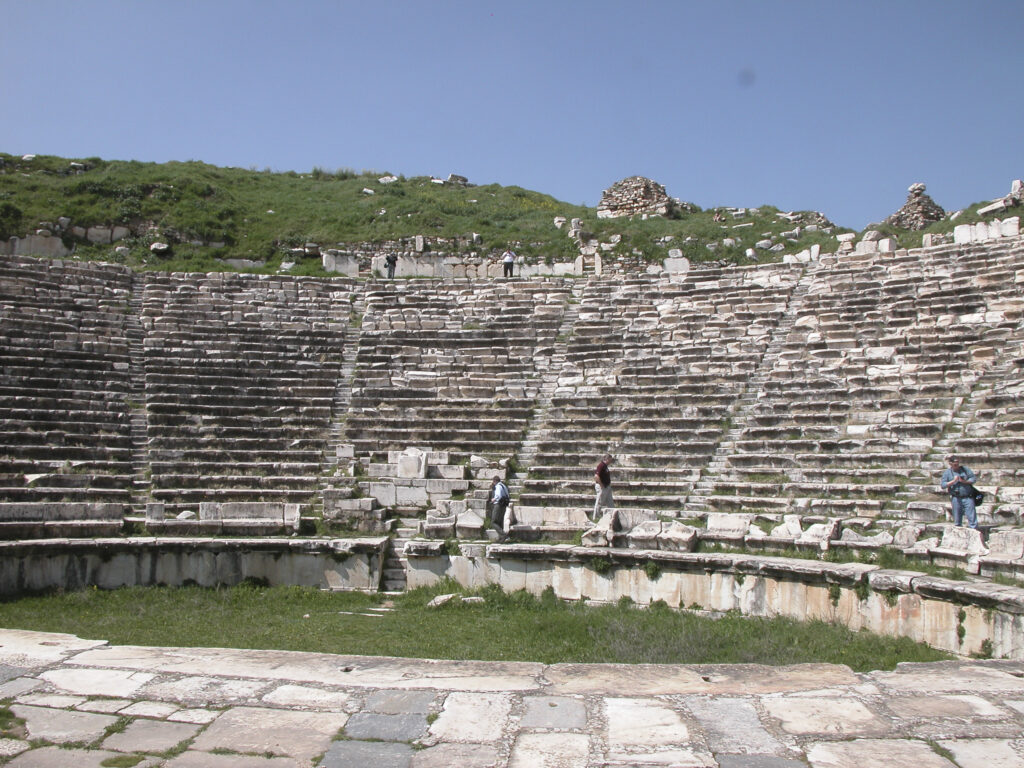
Chuck Mattox took the visit to the Amphitheater as an occasion to ponder the ephemerality of human creations.
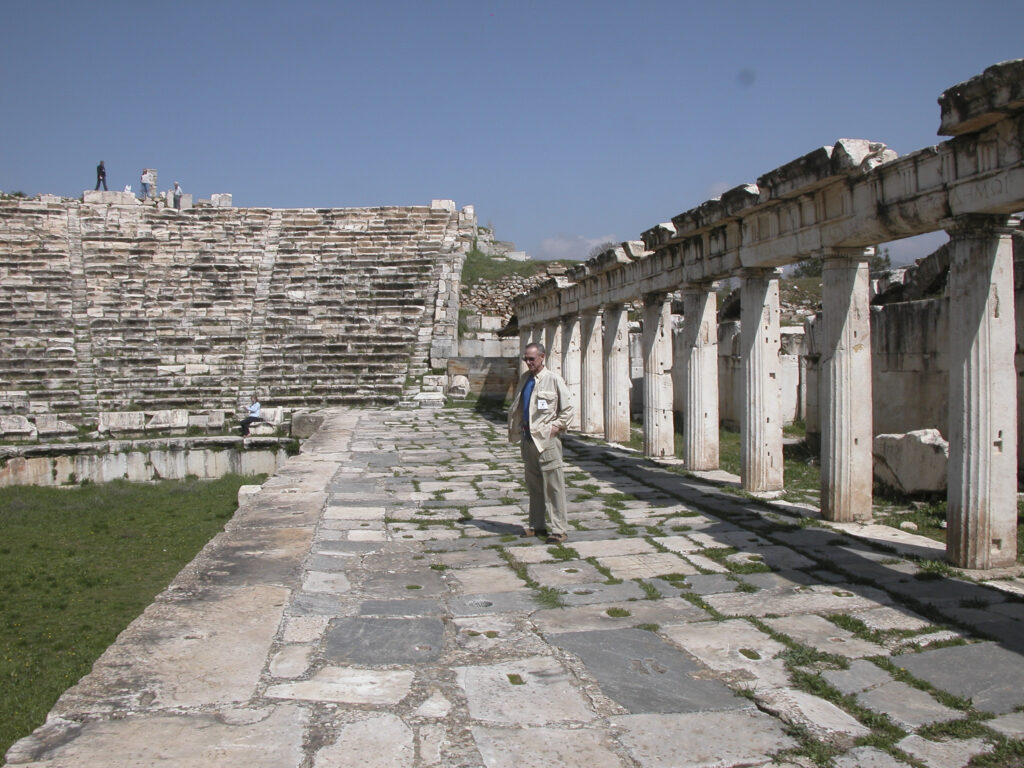
On the north side of the Acropolis, opposite the Amphitheater, lay the North Agora, a large public square of 202 by 72 meters, originally enclosed by stoas (porches) on all sides. Parts of the south and east stoas have remained standing since antiquity, and the north stoa was partially uncovered in excavations in the 1960s. Archaeologists believe the North Agora was the original center of Hellenistic Aphrodisias.
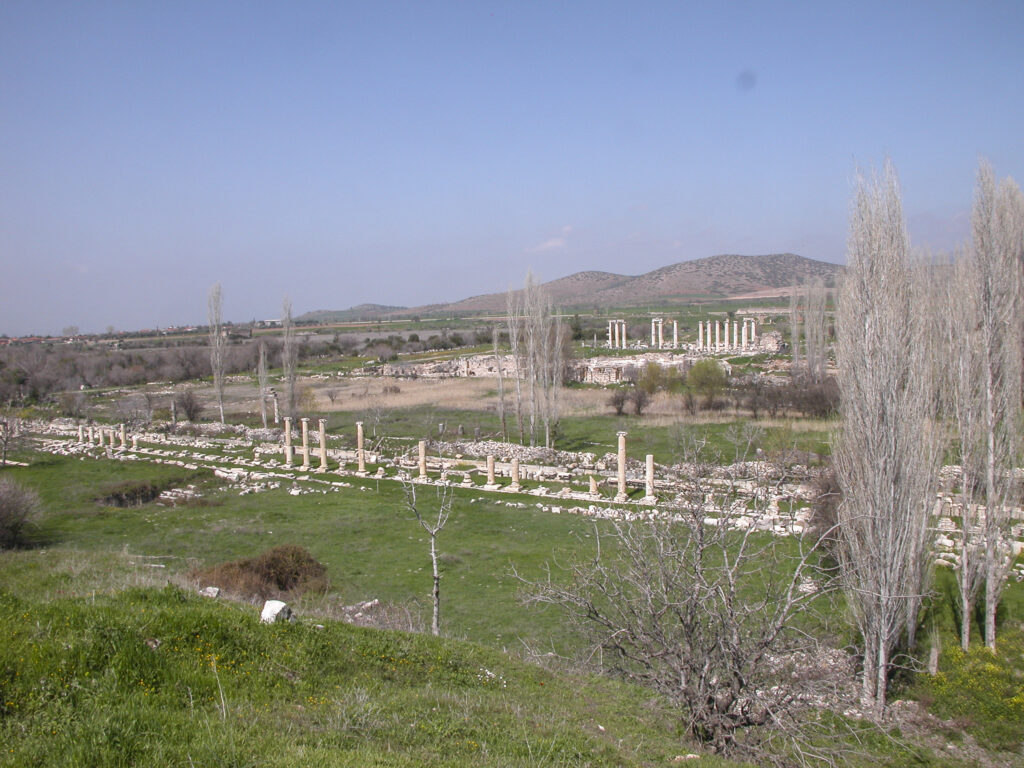
Begun in the reign of Tiberius (14 to 37 CE), for whom it was named, the Portico includes a large pool, 175 meters long, 25 meters wide and 1 meter deep, where devotees of Aphrodite could frolic in the nude and disport themselves in wild orgies. (I made up that last part, but the measurements of the pool are real.)
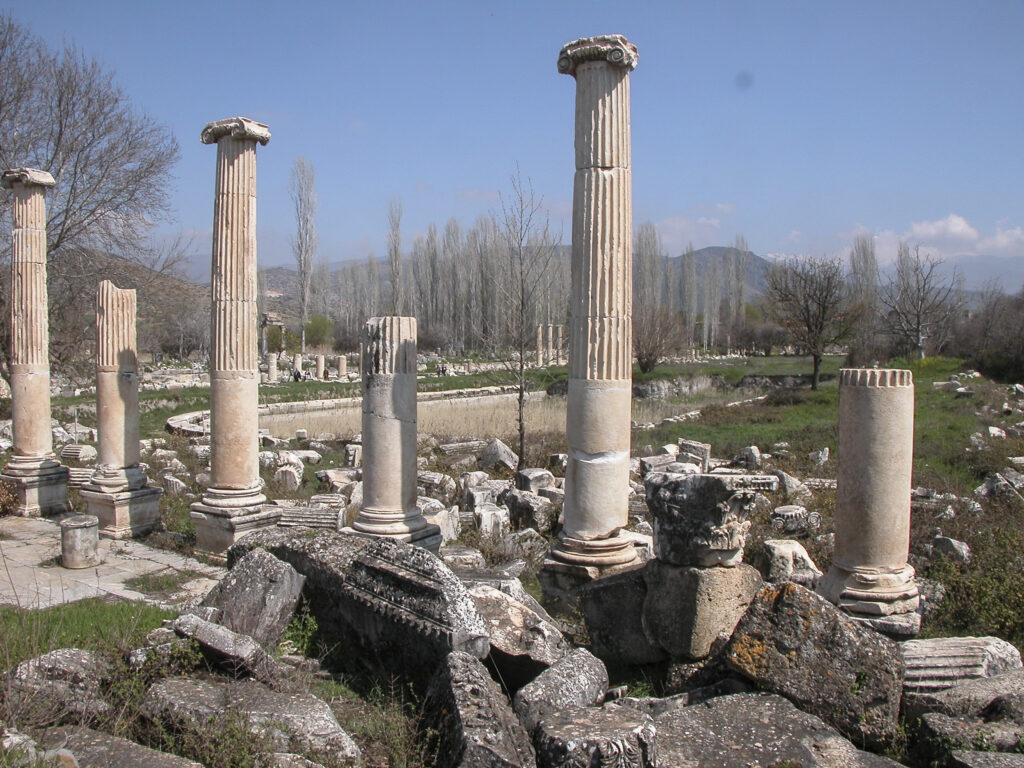
Near the Portico of Tiberius stood the Sebasteion, a product of the building program of Zoilus, dedicated to his patron Octavian/Augustus, the first Roman Emperor. Sebasteios is the Greek form of the Latin name Augustus.
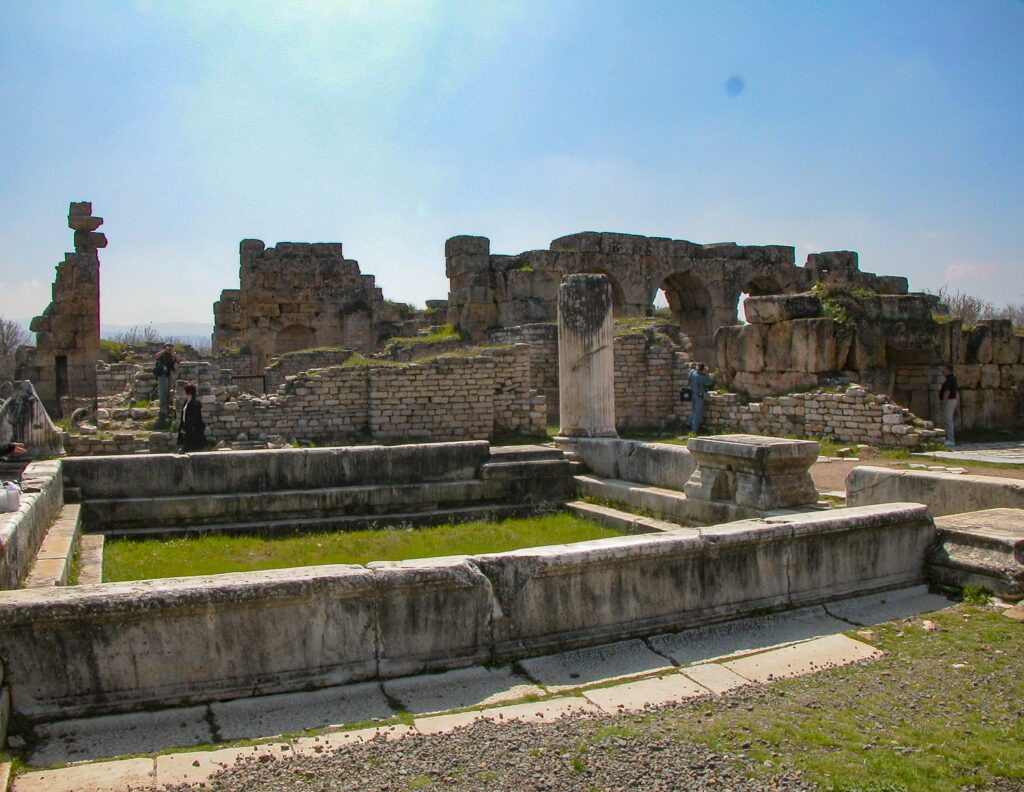
Actually, the Sebasteion was jointly dedicated to Augustus and Aphrodite, the patron goddess of Aphrodisias. There was a well-known connection here: the Emperor Augustus, as nephew and adopted son of Julius Caesar, was a member of the Julian family, which claimed descent from the goddess Venus, the Roman name for Aphrodite.
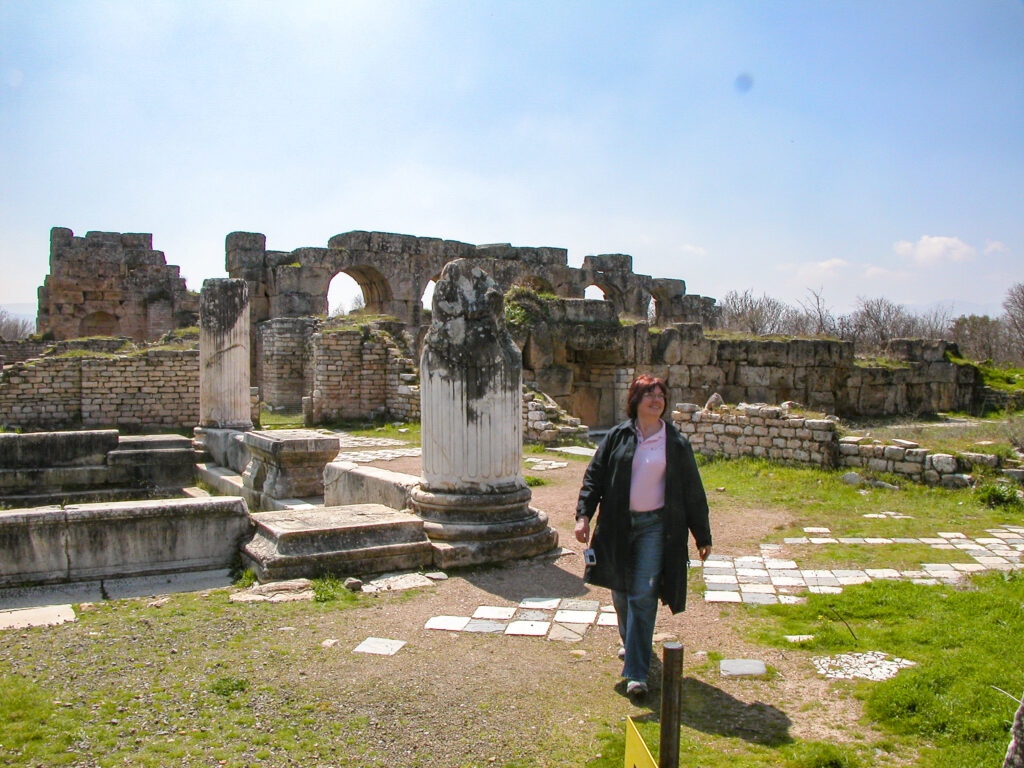
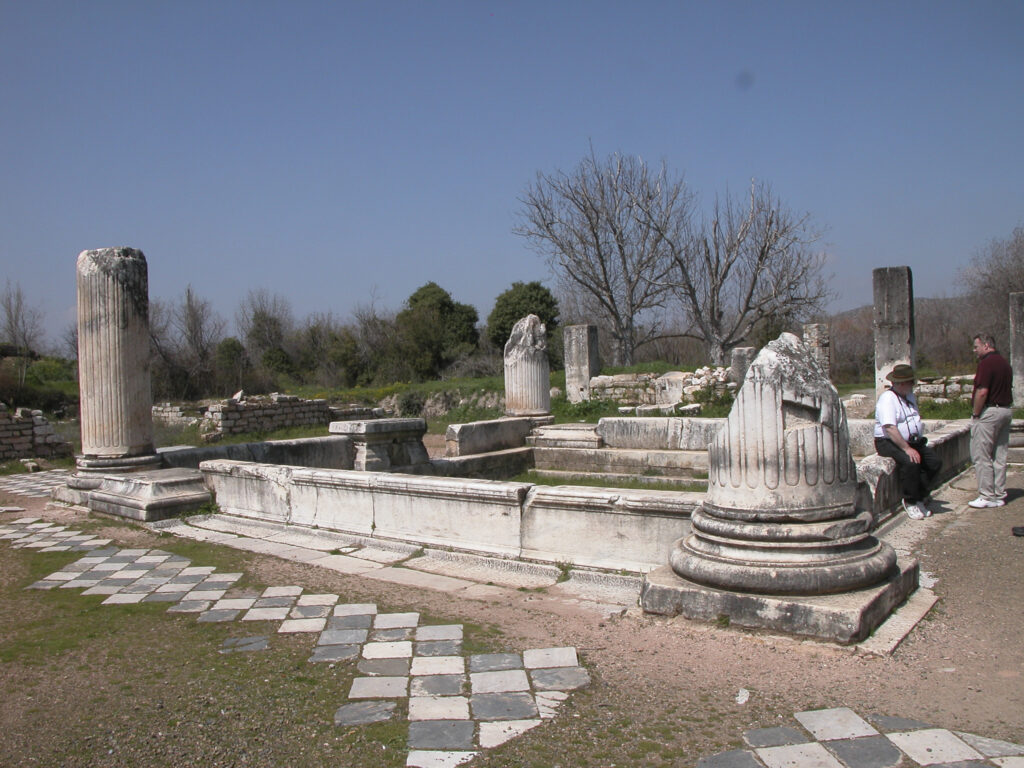
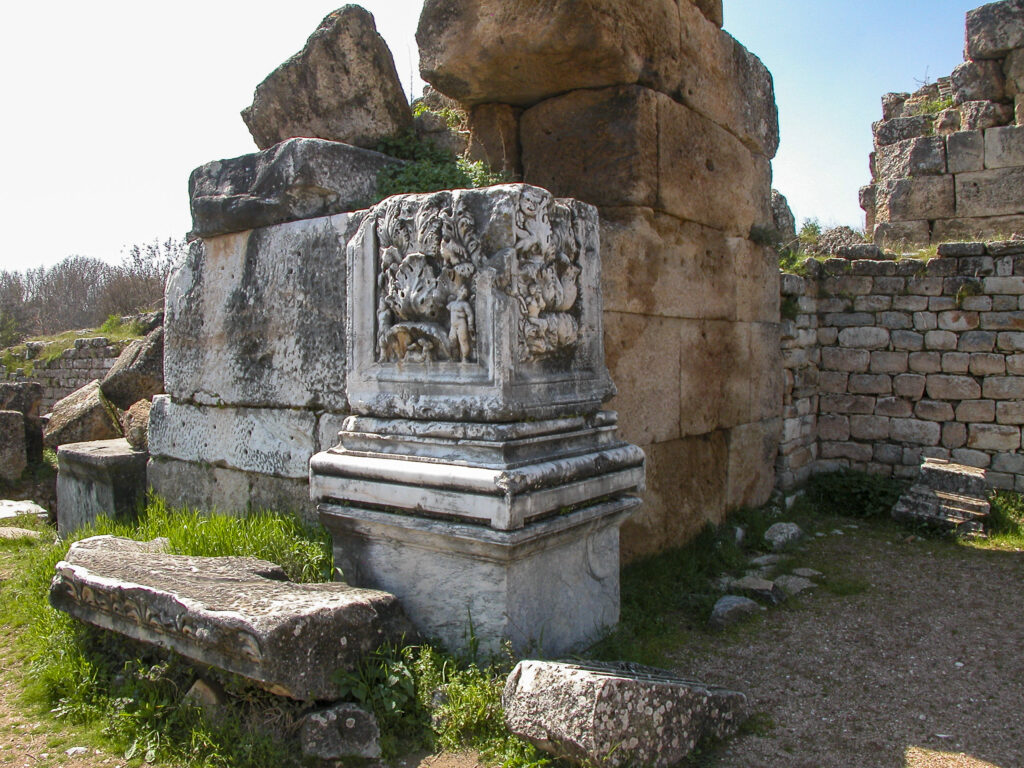
Remember, I mentioned above that the village of Geyre, which had been built on the Acropolis, was relocated after excavations at Aphrodisias began in 1966? Here you can see the relocated village, over the ruins of the Sebasteion.
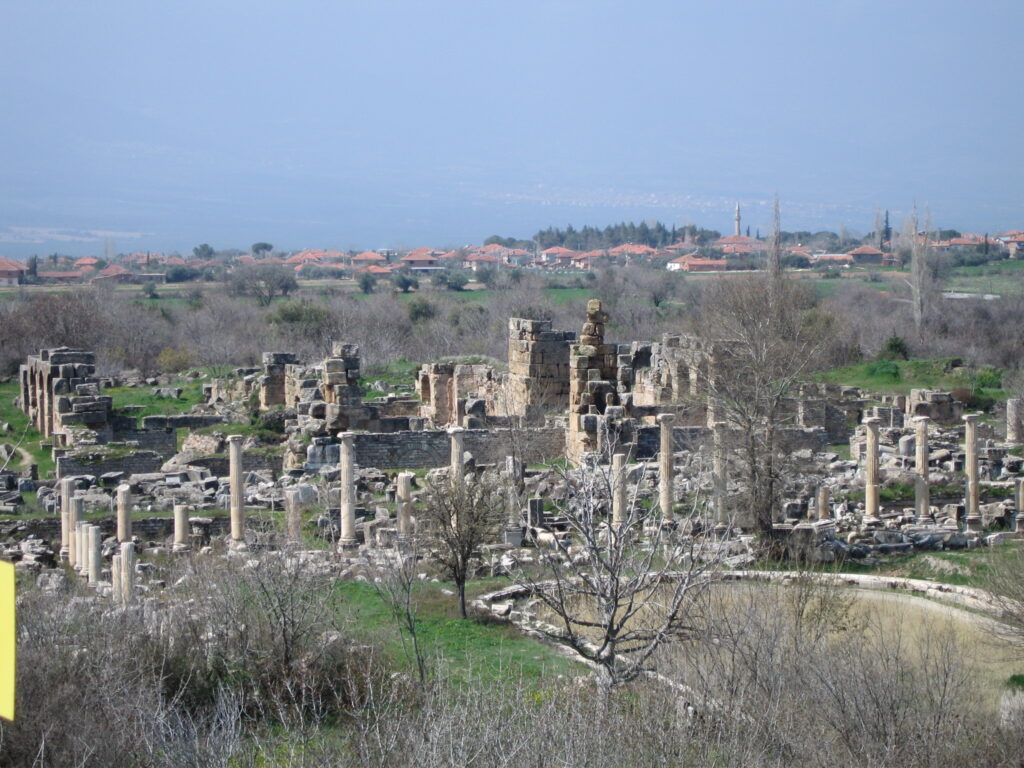
I’m not an architectural expert, but I remember that there are three styles of column capitals inherited from the ancient world – Doric (simple), Ionic (a bit more complicated) and Corinthian (sort of baroque). Aphrodisias had all of them. Here’s one in the Ionic style.
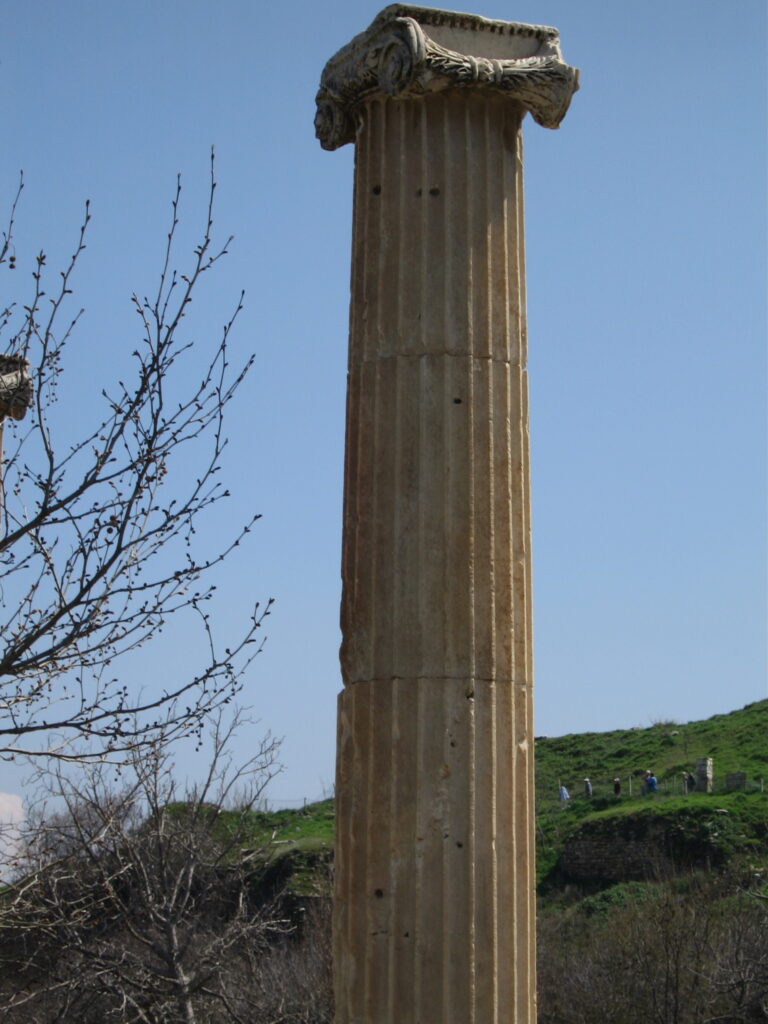
And here’s a column capital in the Corinthian style.
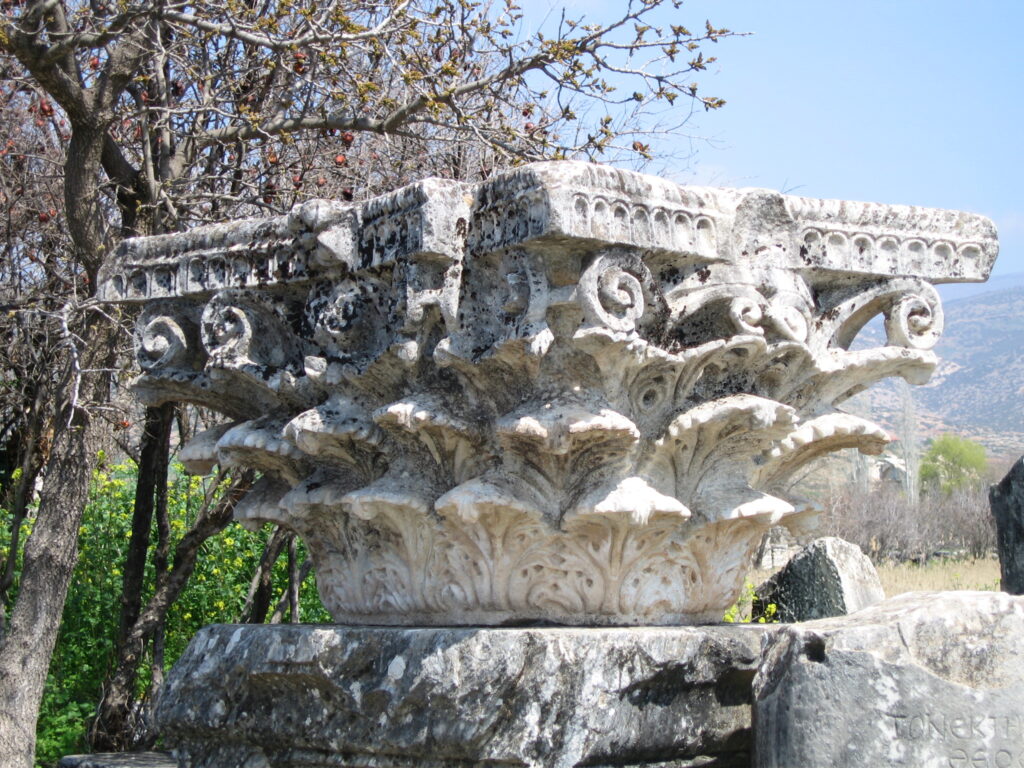
The Sanctuary, or Temple, of Aphrodite was a “focal point of the town” and one of its most magnificent structures. It was another erection of the first-century BCE building progam of the wealthy freedman Zolius, replacing an earlier structure which had been built around the 6th or 7th century BCE as the cult center of a local fertility goddess, who later became identified with Aphrodite in the same way as the local deity of Ephesus came to be identified with the Greek goddess Artemis.
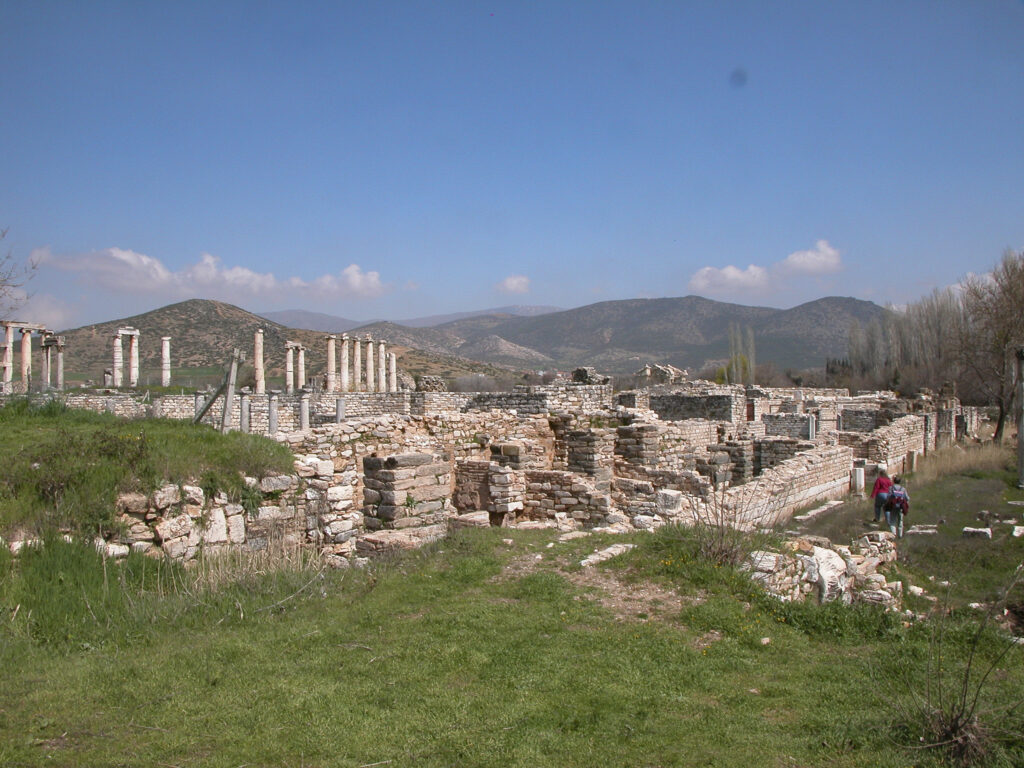
After the conversion of the Roman Empire to Christianity in the fourth century CE, the imperial authorities began to persecute pagans far more effectively than the pagans had ever persecuted the Christians, and Aphrodisia, unsurprisingly considering its heritage as a pagan cult center, became a hotspot of resistance to Christianization. In the late fifth century, the Aphrodisians supported the revolt of the general Flavius Illus against the Emperor Zeno, because Illus had promised to restore the pagan rites. The revolt failed and Illus was executed. In retaliation, Zeno had the temple of Aphrodisias converted to a Christian basilica.
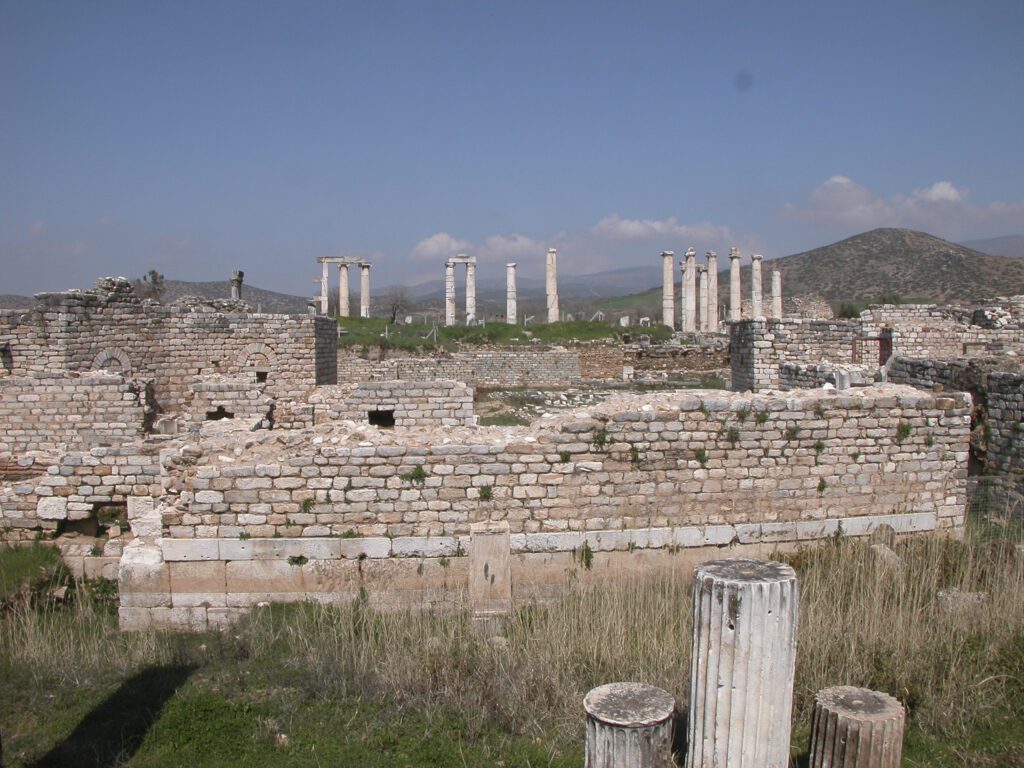
The Odeon, or Bouleterion, was a small theater-like structure where city council meetings were held, among other events. It was built in the late second or early third century CE and seated 1,750 people. It originally had a vaulted ceiling supported by massive buttresses with tall, arched windows in the curved outer wall, but the roof collapsed sometime in the late fourth or early fifth century, along with the upper twelve seating rows, so that now only nine rows are left.
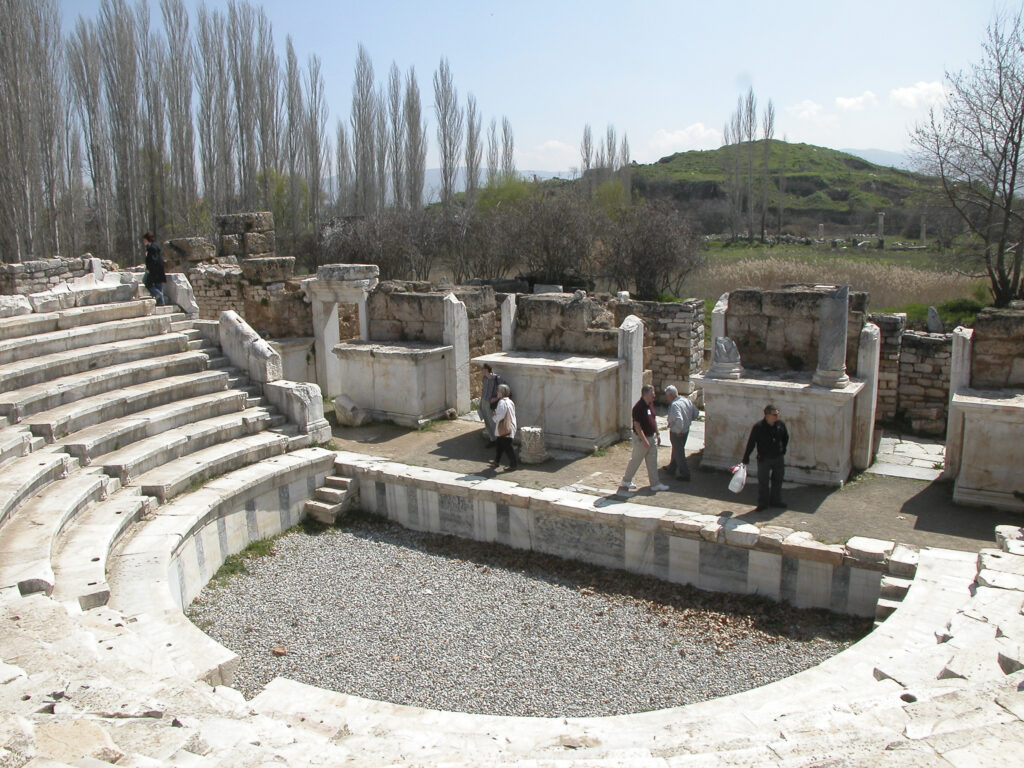
To me the most imposing edifice in Aphrodisias was the Stadium, or Hippodrome, one of the largest and best-preserve structures of its kind in all of classical antiquity. It measured 270 meters (890 ft) by 60 meters (200 ft), had 30 rows of seats on each side and around each end, and had a maximum capacity of around 30,000 spectators.
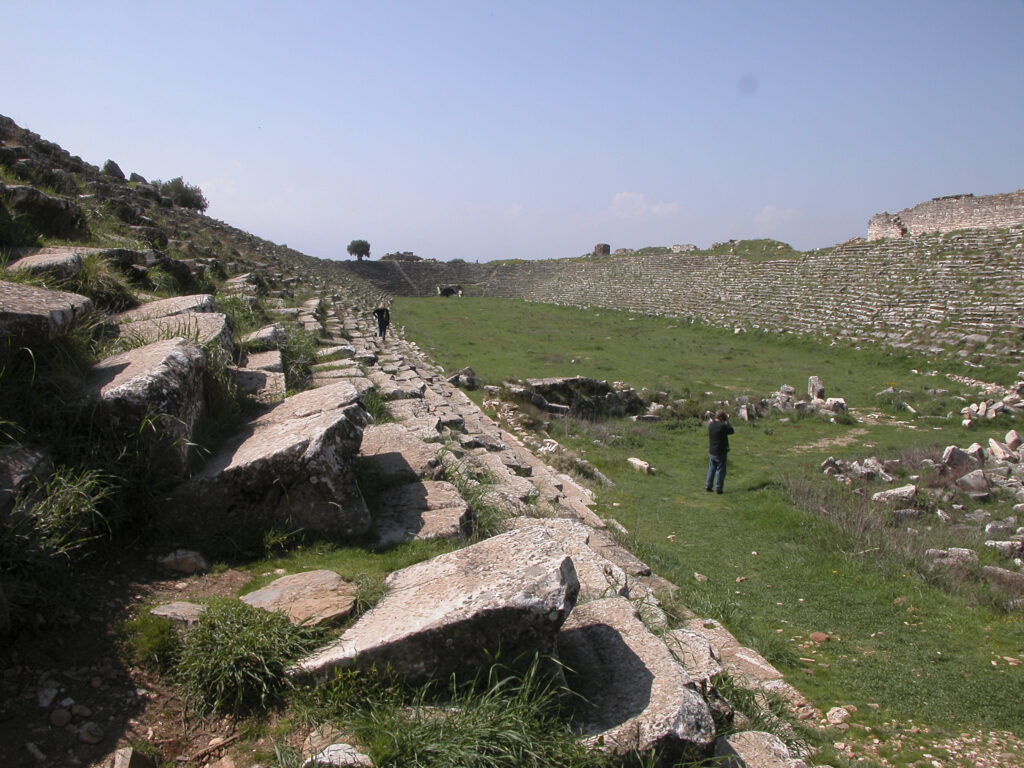
The scale of the Stadium dwarfed the members of our tour group who infested it.
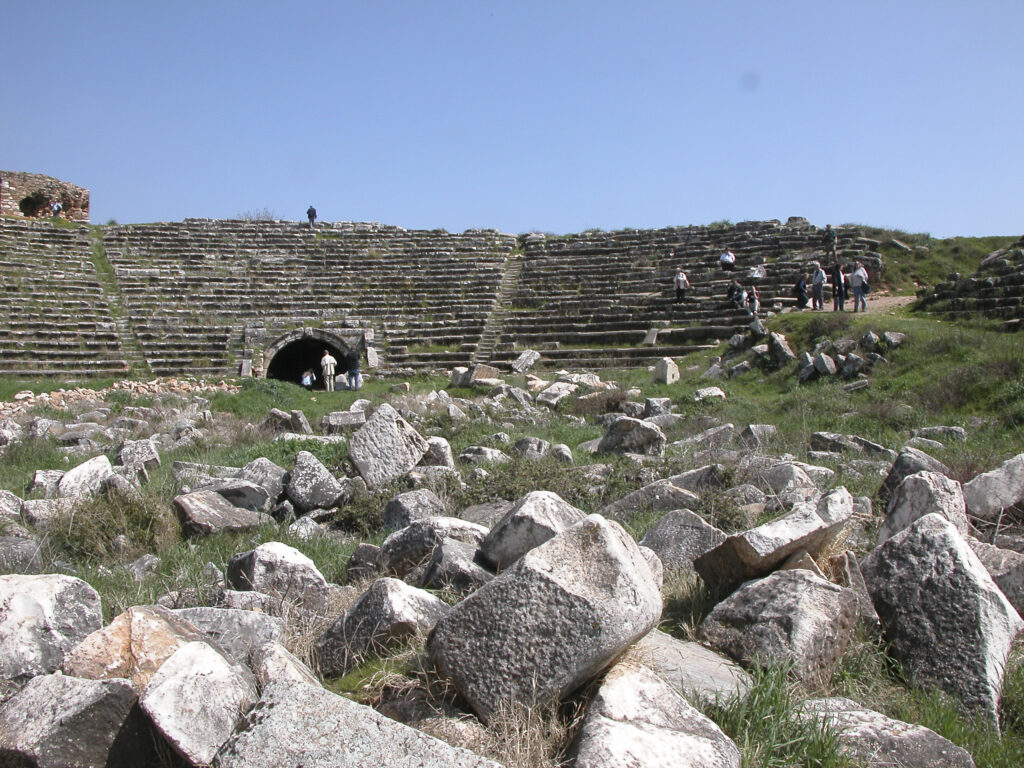
Roman and Byzantine stadia were generally built to accommodate horse and chariot races – hence the name hippodrome. (Hippopotamus, for example, is a Greek word meaning river horse.) One can easily imagine Ben-Hur and his nemesis Messala duking it out in chariot races here.
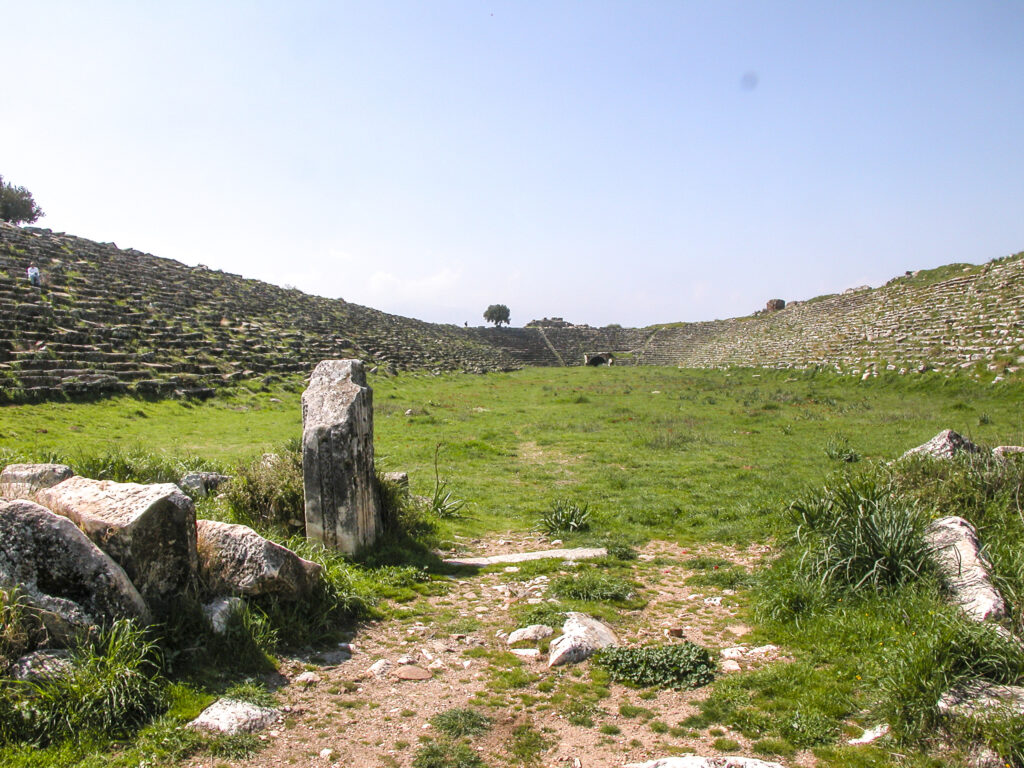
Atop the walls, the Stadium had structures which appeared to be VIP boxes, just as in modern-day stadia like the LA Coliseum.
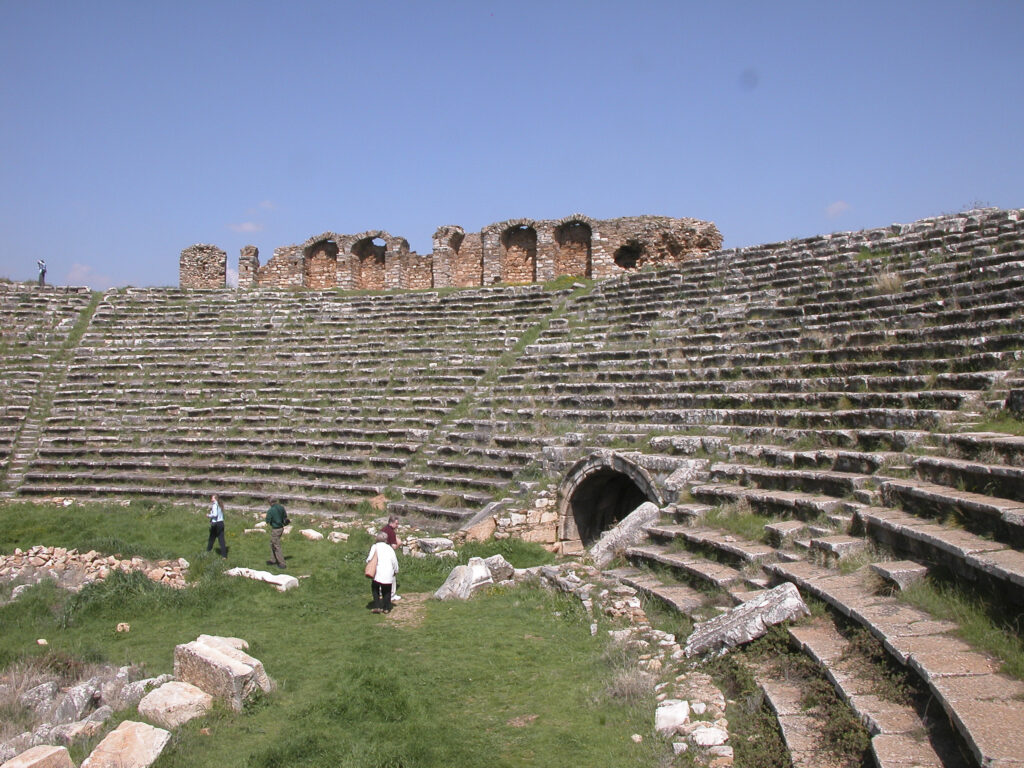
Culvert-like tunnels provided entry to the Stadium.
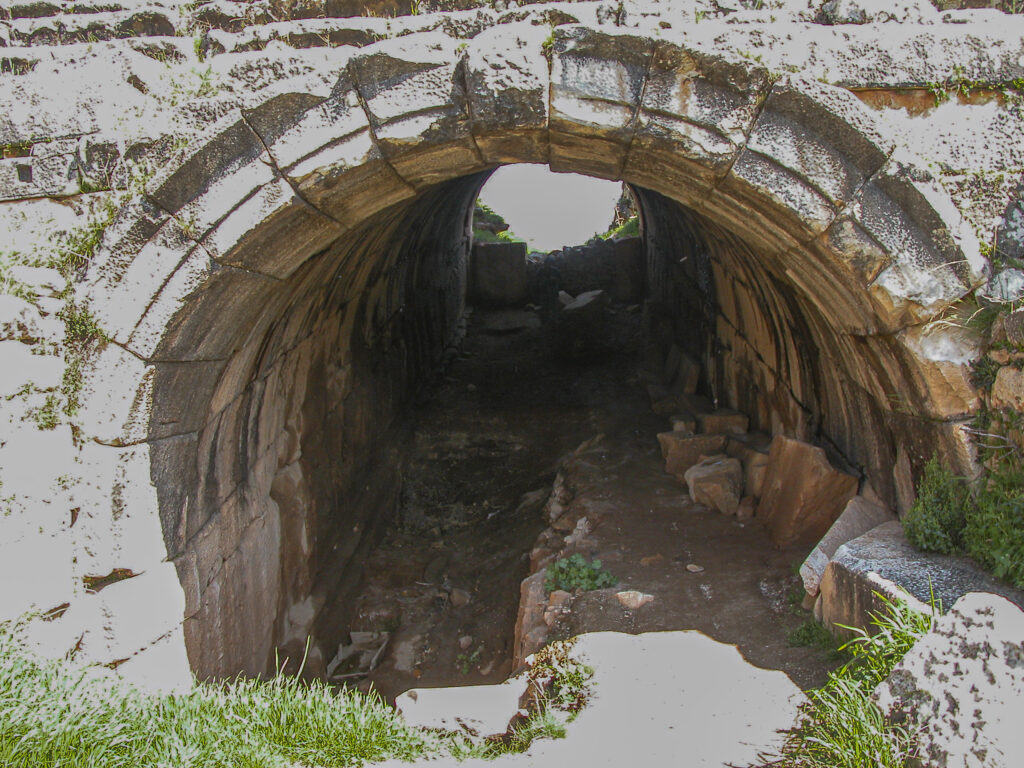
The first structure a visitor would normally see approaching Aphrodisias was the Tetrapylon, a monumental gateway opening to the sacred way to the Sanctuary of Aphrodite. For us it was the last structure we saw of the ancient city, because we toured it back to front, and from there headed back toward the Museum.
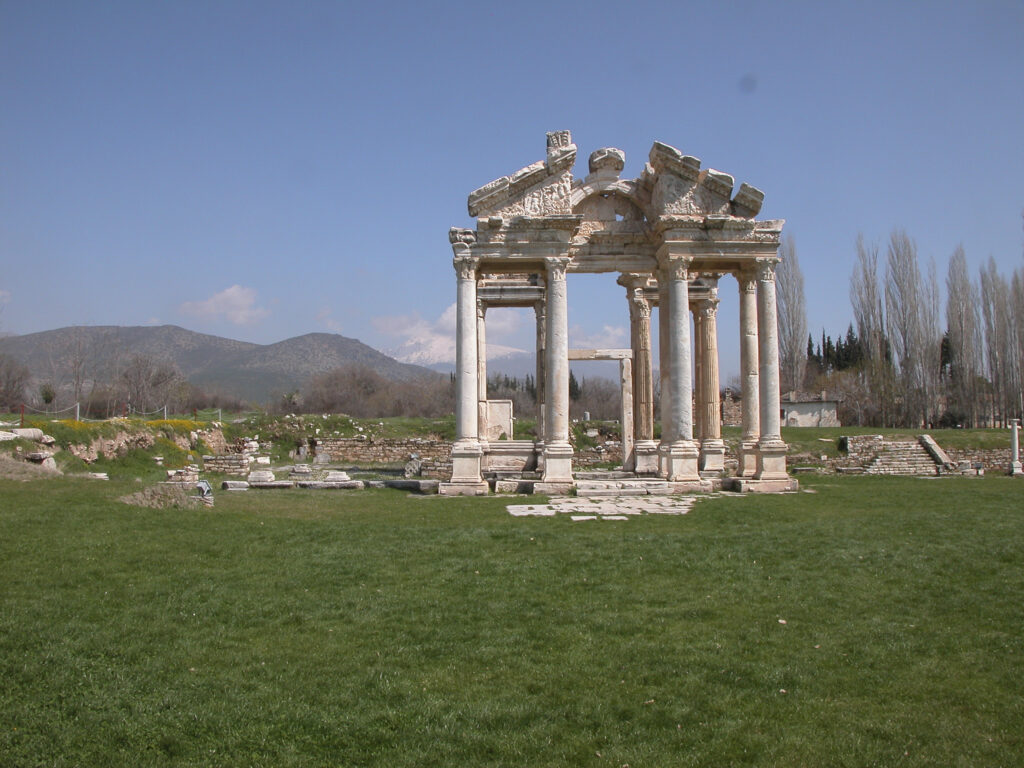
Built around 200 CE, the Tetrapylon consisted of four rows of four columns (tetra = four and pylon = gateway in Greek). The pediment was decorated with relief figures of Eros and Nike hunting among the acanthus leaves.
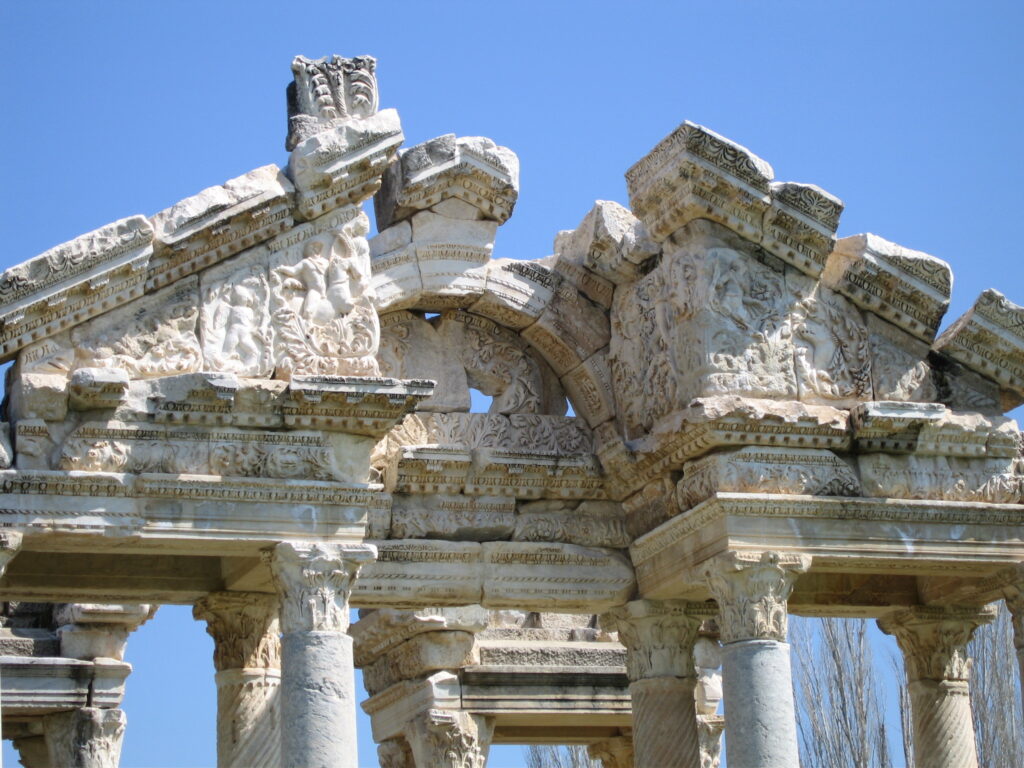
The Tetrapylon as seen here was in rather sorry shape by the time excavations began in the 20th century. It was the object of a massive restoration effort, culminating in its re-erection in 1990. Here we took our leave of the ancient city of Aphrodisias, and made our way through poppy fields back to the Museum.
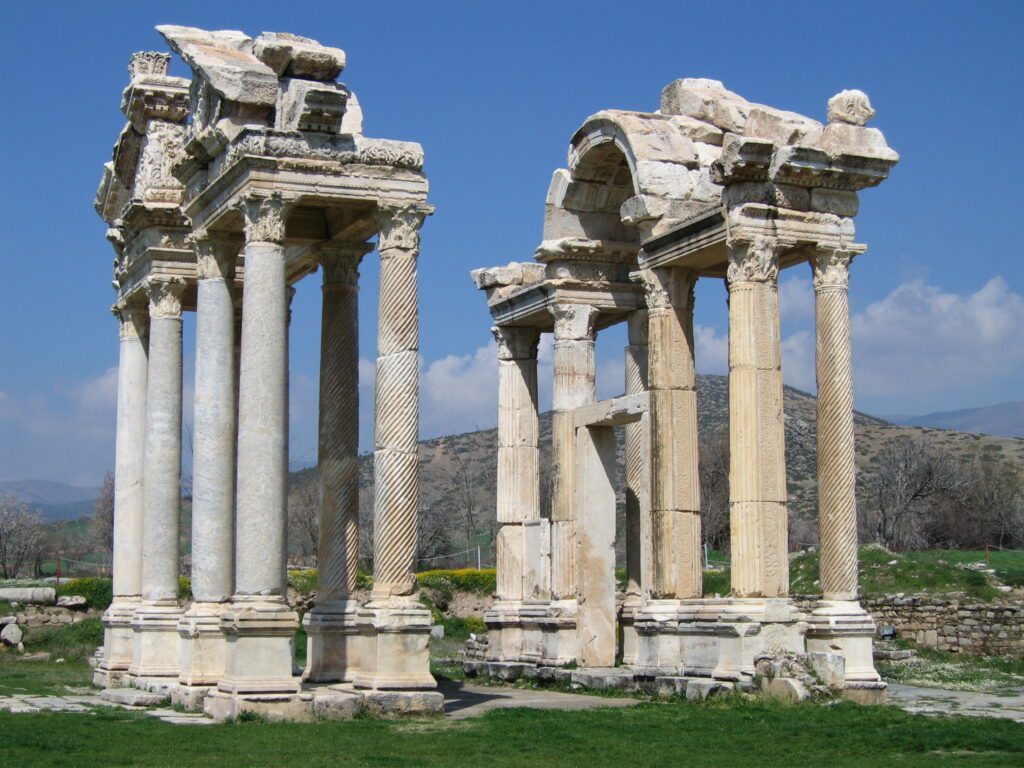
In Flanders fields the poppies blow
Between the crosses, row on row,
That mark our place; and in the sky
The larks, still bravely singing, fly
Scarce heard amid the guns below.
We are the Dead. Short days ago
We lived, felt dawn, saw sunset glow,
Loved and were loved, and now we lie,
In Flanders fields.
Take up our quarrel with the foe:
To you from failing hands we throw
The torch; be yours to hold it high.
If ye break faith with us who die
We shall not sleep, though poppies grow
In Flanders fields.
— John McCrae
These words, written to commemorate the ghastly slaughter in Belgium and Northern France during World War I, equally well apply to Turkey, which was another major theater of battle in that war, and continued to be an area of bloody strife after the end of hostilities in the rest of the world.
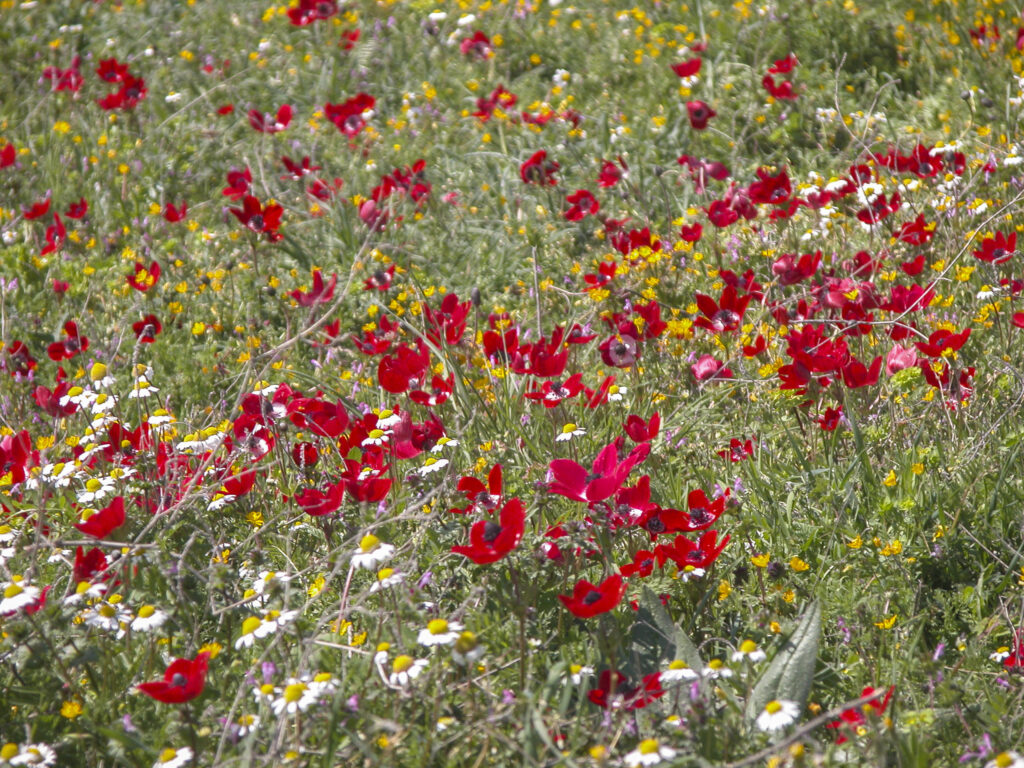
Speaking of graves, on the way back to the Museum we encountered the last resting place of Kenan Erim, theTurkish-born archaeologist who led the excavation and restoration of Aphrodisias from 1962 to 1990.

In the Museum we encountered a bust of Gaius Julius Zoilus. It has been suggested that Zoilus had been made a slave by pirates, who captured him and sold him to Julius Caesar. This was a common misfortune for inhabitants of the Mediterranean world in Greek and Roman times. In facdt, as a young man Julius Caesar himself had been captured by pirates off the coast of Turkey. Caesar, however, as a member of Rome’s elite, commanded resources that a commoner like Zoilus would not have had access to. He was able to ransom himself. Supposedly the pirates demanded a ransom of 20 talents of silver, but Caesar felt insulted at being valued so low, and insisted that they hold out for 50 talents. Other than that, his captivity was an easy one; Caesar treated the pirates as if they were his buddies, carousing and partying with them, all the while assuring them that when he was freed, he would raise a fleet, come after them and crucify them all. The pirates thought this was a great joke, until, after being ransomed, Caesar did indeed do exactly as he promised, although he had the good grace to have the pirates’ throats cut before hanging them on their crosses.
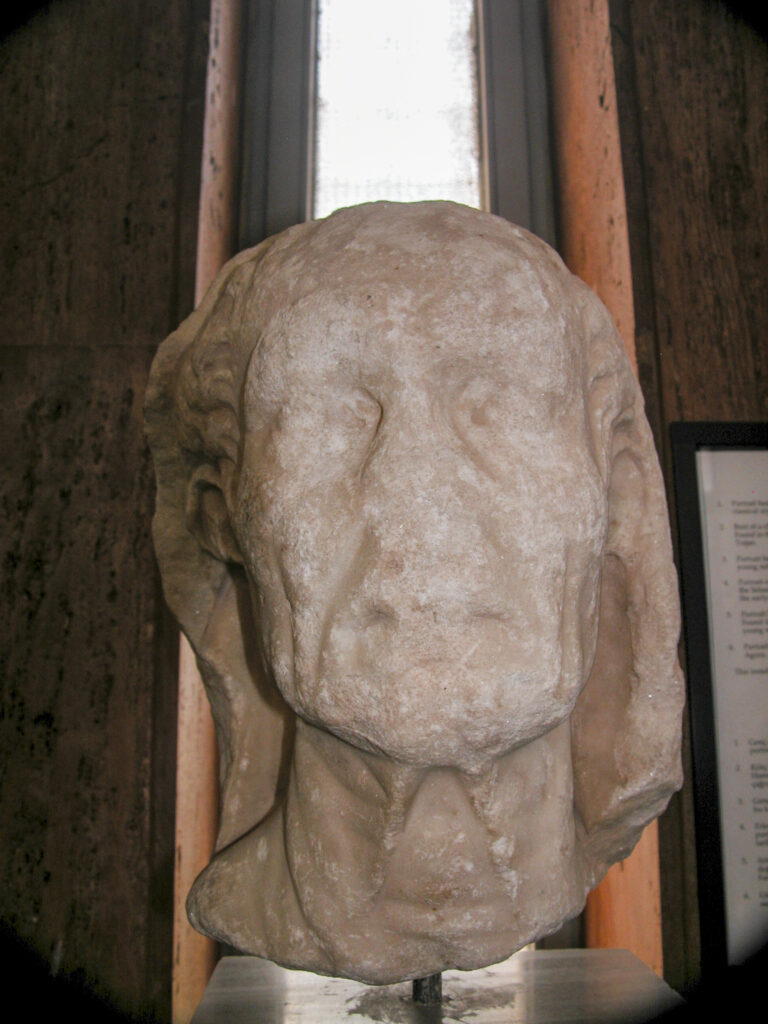
We also encountered a headless statue of a Roman. Since it was headless, I couldn’t tell whom it represented, but at a guess I’d say that it was most likely Zoilus’ patron Octavian.
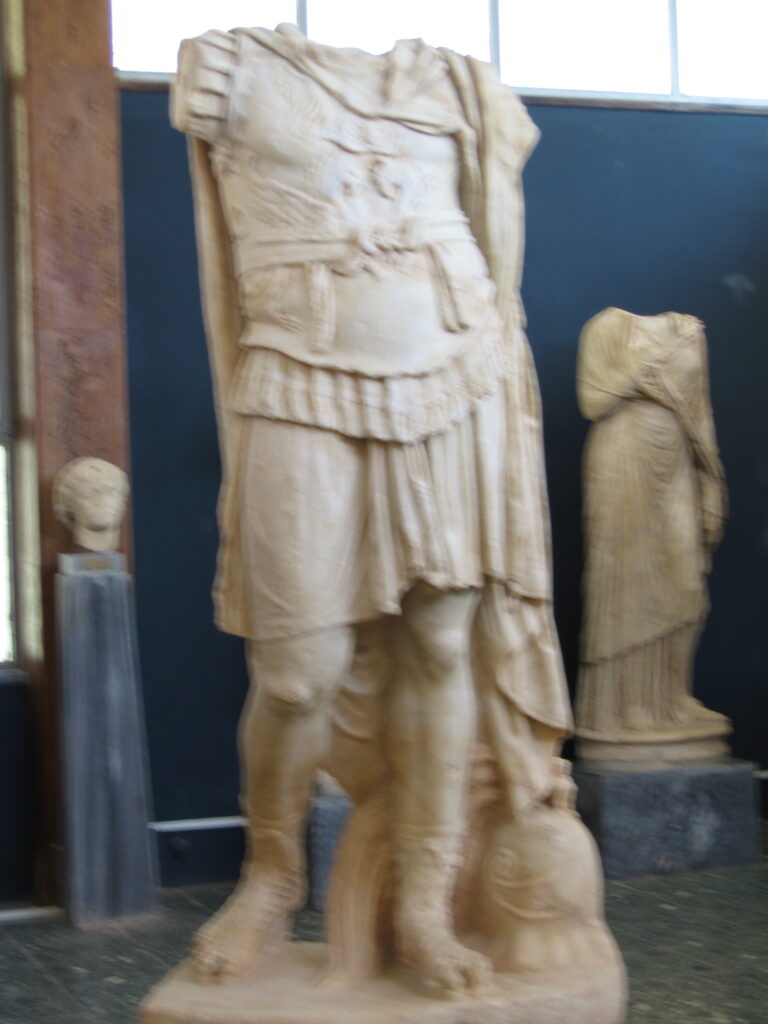
The Aphrodisian sculptors were very prolific, and their work was renowned in the ancient world. Part of the secret of their success, perhaps, was the plentiful supply of high-quality marble available in the region. We saw numerous examples of their work both inside and outside the Museum, such as the bas-relief below with its intricate stonework.
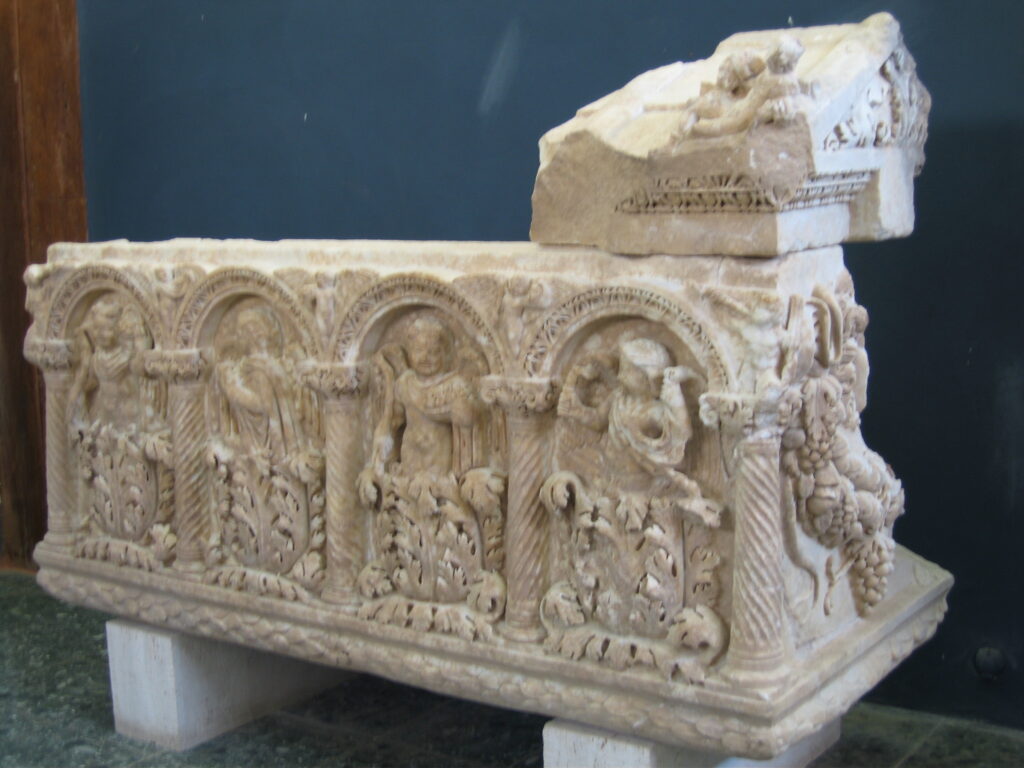
The Museum also had some nice pottery, such as this lovely multi-colored bowl, which Sandie much admired.
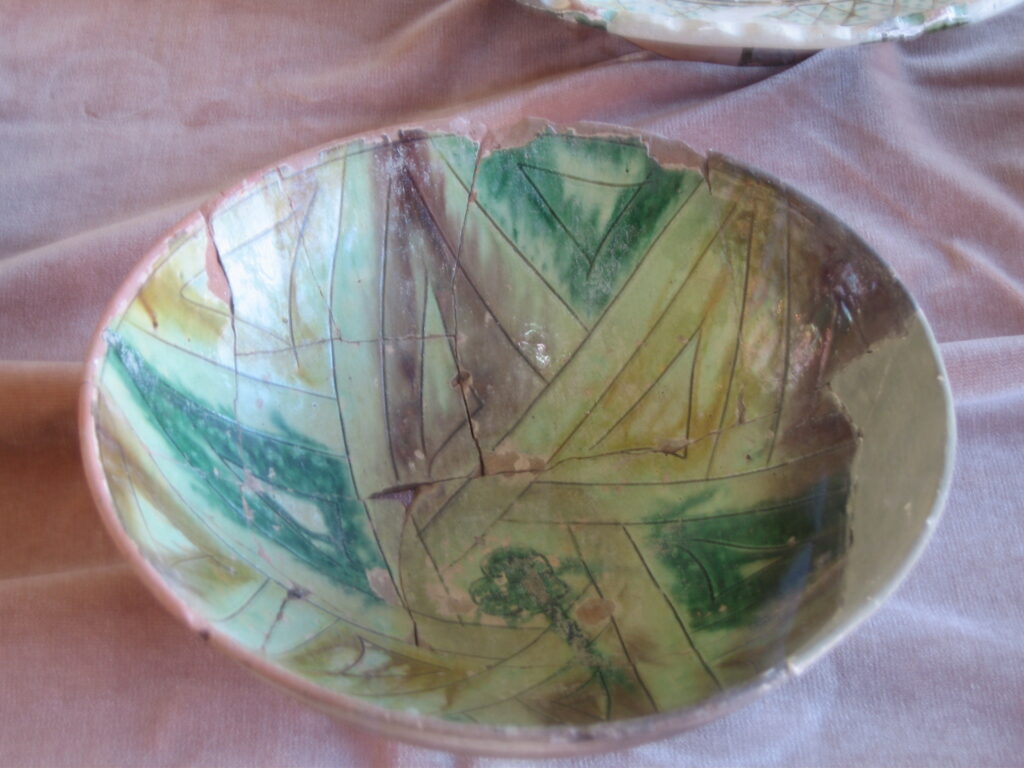
The Museum had a collection of exquisitely made “Roman Lamps,” actually candle-holders, excavated from the Aphrodisias site. I especially like the one shaped like a foot.
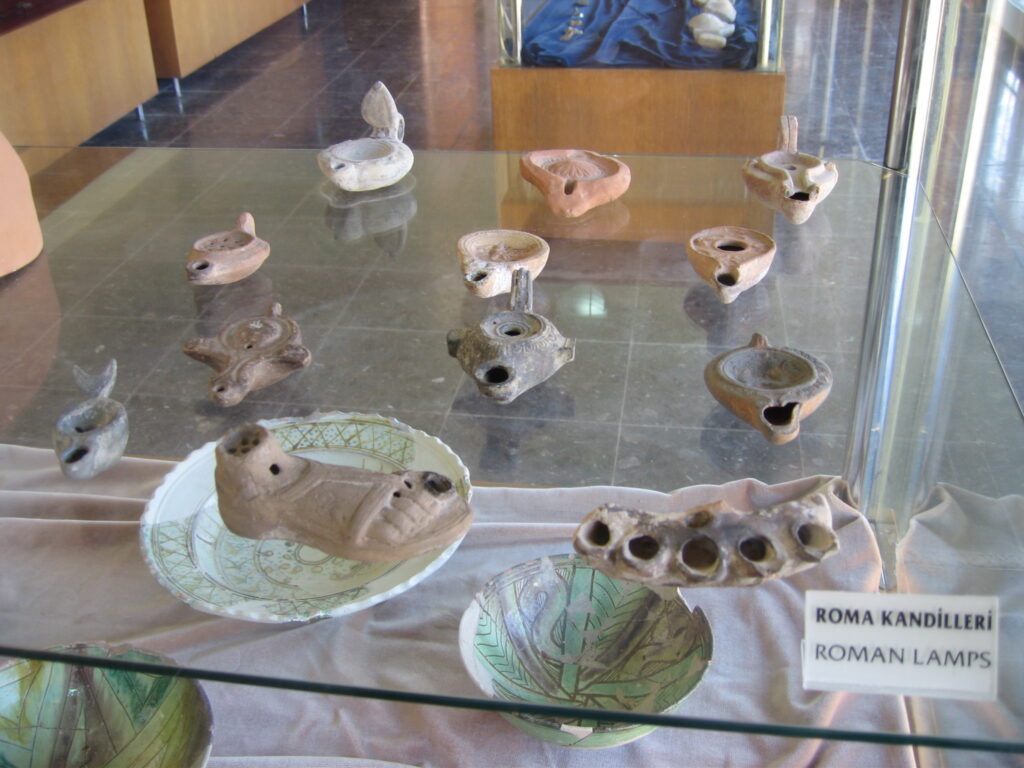
The Museum’s collection included a number of sarcophagi, stone coffins decorated with sculpture, many of them stored outdoors. I didn’t have time to decipher the inscriptions to determine whom had been buried in any of them.
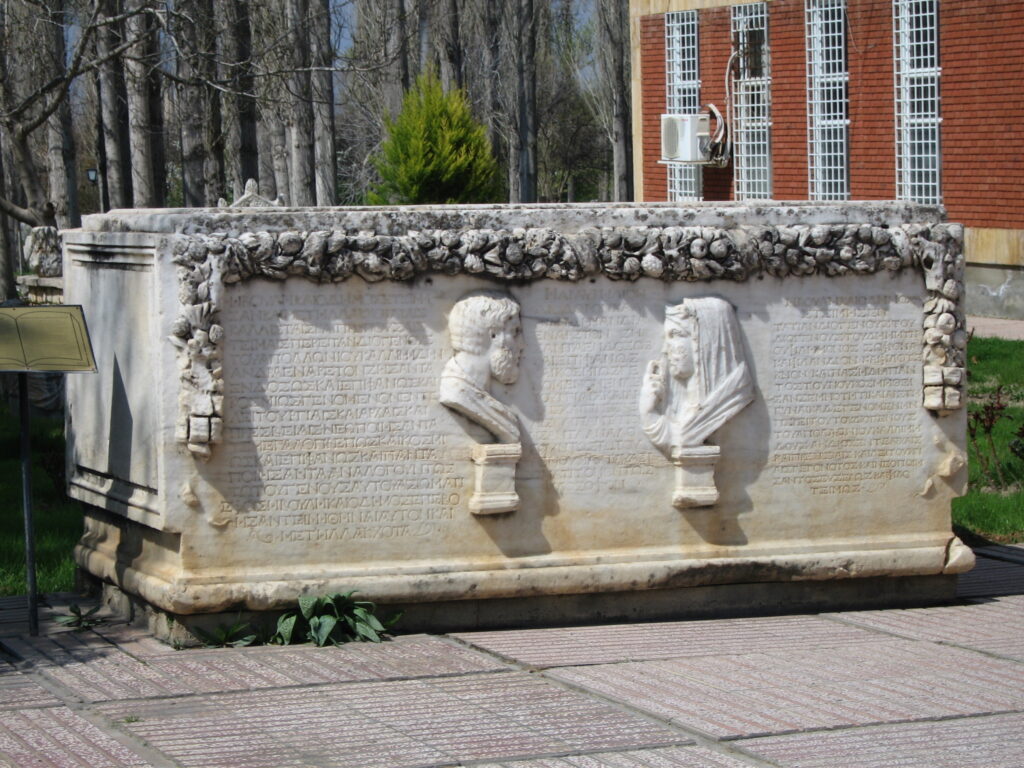
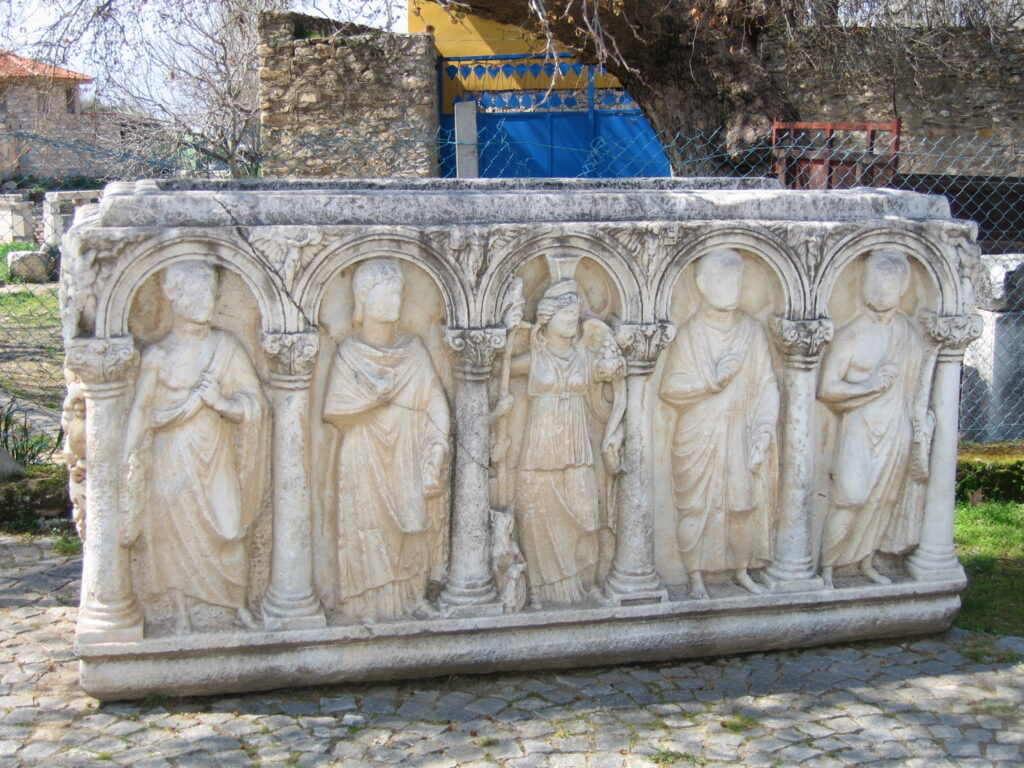
One of the last pieces we encountered on our way back to the bus featured a set of heads in bas-relief. I was tempted to purloin one of them to put on the decapitated statue in the museum. I think I would have chosen the rightmost one in the lower row.
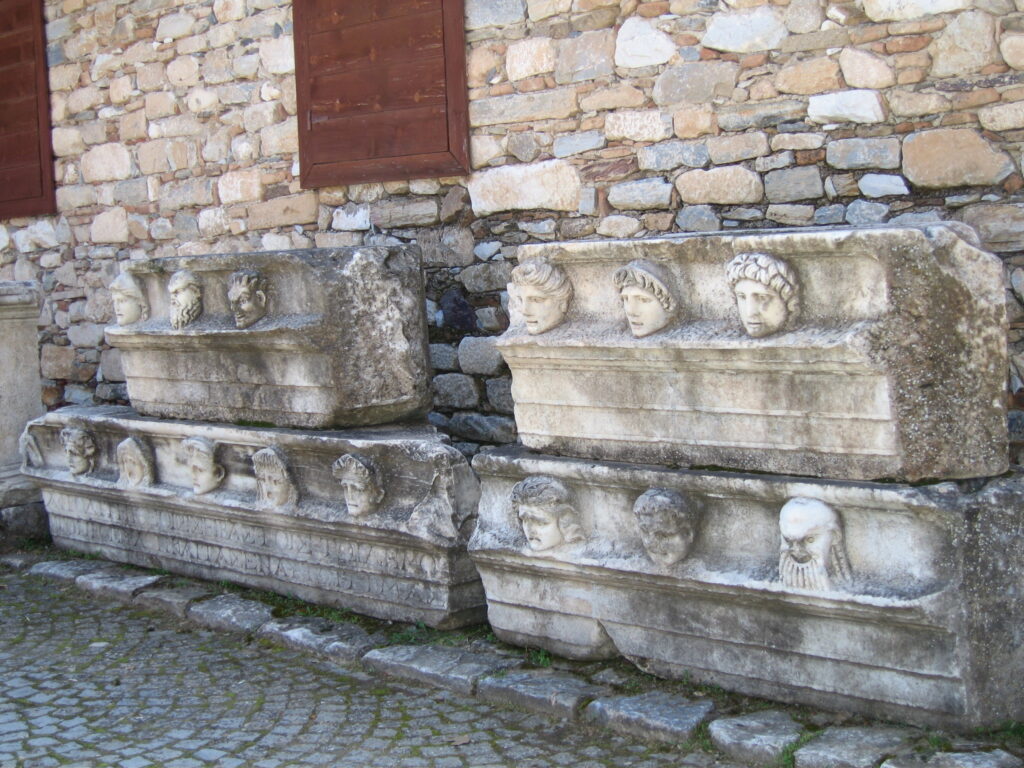
Also outside the Museum was the stone lion, everyone’s favorite.
